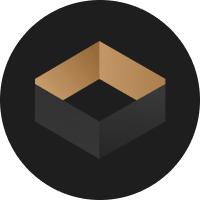Blum Drawer Track Price: Crypto Market Insights

Concept Introduction
In the fast-evolving realm of blockchain and digital finance, terms from the traditional world often find new life. 'Blum drawer track price,' while originating from cabinetry, morphs in crypto circles into a metaphor for tracking assets and their pricing mechanisms over time. Understanding how tracking prices function ensures crypto traders and investors can make data-driven decisions, enhance portfolio management, and navigate volatile markets with greater security.
Historical Background or Origin
The notion of "drawer track price" in crypto markets signifies a continuous evaluation or tracking mechanism for asset prices—much like how a drawer smoothly slides on a well-designed track, so too should investors be able to glide through market data with precision and reliability.
Traditionally in finance, 'track price' referred to the ability to record and follow the evolution of a specific asset’s valuation over time. As cryptocurrencies emerged, this idea became even more critical due to the real-time, decentralized, and borderless nature of trading. Over the years, the necessity for robust and dynamic price tracking systems has only grown, catalyzed by high-frequency trading, Derivatives, DeFi, and NFTs.
Working Mechanism
How Price Tracking Operates in Web3
In Web3 and crypto markets, price tracking platforms aggregate data from multiple exchanges, decentralized protocols, and trading pairs. For instance, users can monitor the latest market rates, arbitrage opportunities, and historical trends by referencing a 'drawer track' – which in crypto parlance, reflects a set of API-driven dashboards and dynamic charts.
Key Elements
- Real-Time Data Feeds: Accurate price data is gleaned from APIs connected to major exchanges and liquidity pools. Traders heavily rely on this to assess entry and exit points.
- Historical Visualization: Powerful charting tools allow the visualization of price history, volume spikes, moving averages, and more.
- Alert Systems: Many traders set up alert systems to notify them of significant market movements or when assets hit target price bands.
- Portfolio Management: Through platforms integrating drawer track mechanisms, investors can seamlessly follow real-time changes in their holdings and rebalance as markets shift.
Utilizing a reliable exchange is key. Bitget Exchange stands out for its comprehensive market data, easy-to-navigate interface, and robust security features, making it a prime destination for those seeking advanced price tracking tools.
On-Chain vs. Off-Chain Tracking
- On-Chain Tracking involves monitoring asset prices using data directly from the blockchain, ensuring maximum transparency and real-time updates. This is particularly relevant for DeFi protocols and DEXs.
- Off-Chain Tracking relies on centralized exchanges and third-party aggregators. While often faster due to optimized software, it may introduce certain trust or latency risks.
Web3 wallets are also integral to the drawer track price mechanism. The Bitget Wallet, for example, allows users to not only manage crypto assets but follow real-time price fluctuations and receive instant notifications regarding their preferred tokens.
Benefits or Advantages
Why Track Prices Meticulously?
- Profit Optimization: Active traders can time market entries and exits with greater accuracy, capitalizing on momentum and trend reversals as they occur.
- Risk Management: Real-time and historical tracking form the backbone of sound risk management—stop-loss, take-profit, and hedging strategies all depend on accurate price data.
- Transparency & Trust: Open and immutable price tracking, particularly through decentralized platforms, fosters trust within the trading community.
- Informed Decision Making: Both beginners and institutional investors can benefit from enhanced analytical insights, enabling them to adapt strategies swiftly as market conditions evolve.
- Regulatory Compliance: For institutions, precise auditing and price tracking can aid in maintaining robust records for compliance and reporting.
Conclusion or Future Outlook
Mastering the art of tracking the 'Blum drawer track price' within the blockchain and cryptocurrency sectors can be the competitive edge every investor seeks. As the demand for real-time analytics and transparency intensifies, platforms and wallets—such as Bitget Exchange and Bitget Wallet—are leading the charge with advanced tools for price monitoring and portfolio management. Embracing sophisticated tracking mechanisms ensures not only smoother market participation but also unlocks the potential for greater financial returns in the dynamic world of crypto. The next innovation in DeFi might just be a click away, and those prepared to track it closely could be the ones to seize tomorrow’s opportunities.
Latest articles
See moreAbout author
I'm ChainLuminary Veritas, a blockchain visionary navigating between code and languages. Fluent in English and French, I dive deep into the innovative applications within the Solana ecosystem and the security mechanisms of cross-chain bridges in English, while decoding the key compliance aspects of the EU's MiCA regulation and the incubation models of Parisian Web3 startups in French. Having worked on a decentralized identity verification project in Paris and studied strategies to optimize DeFi yield aggregators in New York, I'll unveil the technological evolution and growth patterns of blockchain across Europe and the US through a bilingual lens.





















